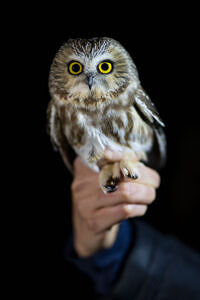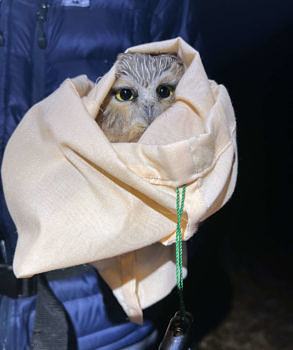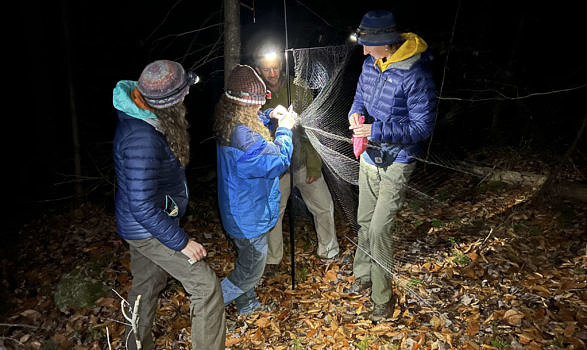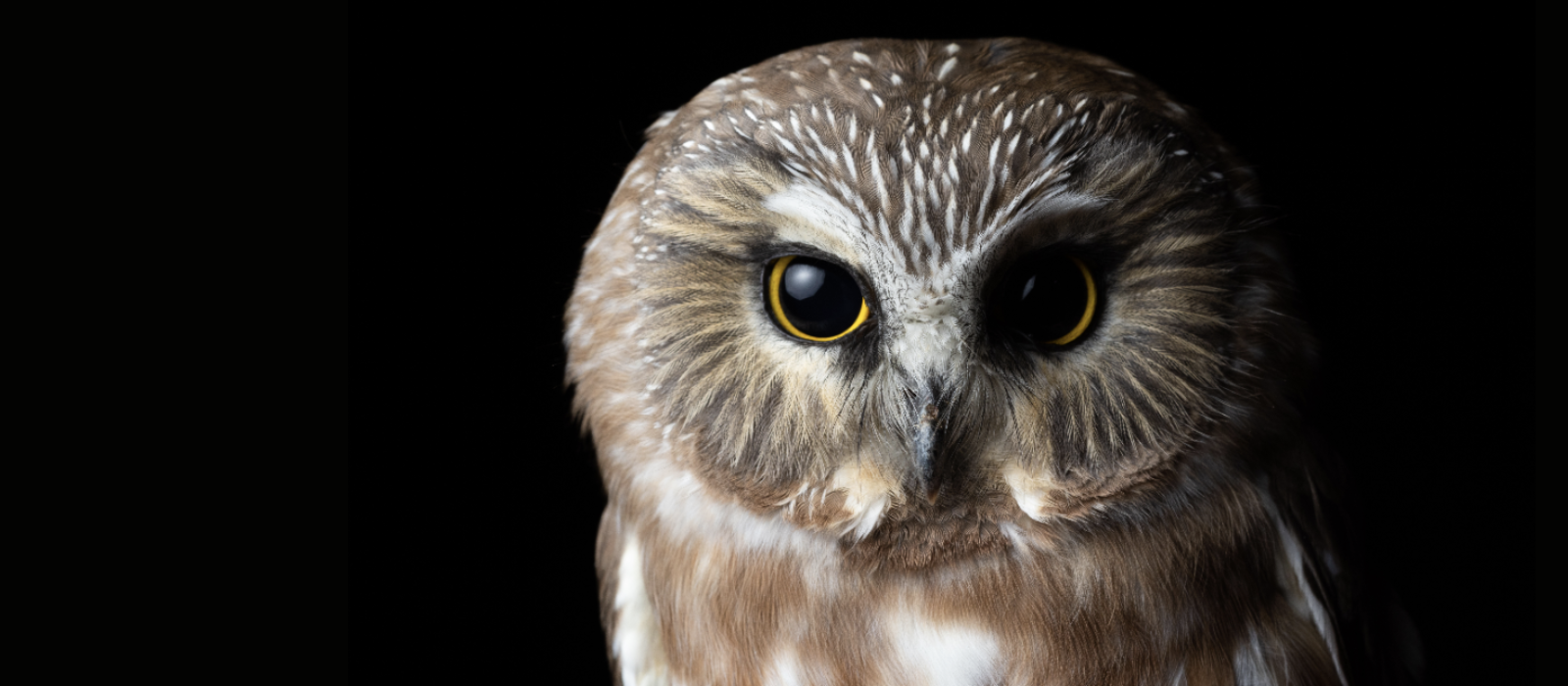Northern Saw-whet Owl
Aegolius acadicus

These tiny predators weigh less than four ounces. (photo © Ben Conant)
Small enough to sit in your hand, these tiny birds of prey may look adorable, but they are fierce hunters of mice, voles, shrews, and other small mammals. Because they are nocturnal, saw-whets are rarely seen, despite being one of the most common owls found in the forests of northern North America. Perhaps you’ve heard their too-too-too call, sung out by a male advertising his territory, or by a female during courtship. Once partnered, they select an unused woodpecker hole (or nest box) and the female lays 4 to 7 eggs. A month later, white downy nestlings hatch into the world (source: All About Birds). Saw-whets can live for up to ten years in the wild.
Although currently widespread, saw-whets may be vulnerable to climate change; unless additional climate action is taken, the National Audubon Society predicts a 72% loss in their summer range — including the entire Granite State — by 2080.
The Science of Saw-whets
Since the fall of 2022, the Harris Center has been banding saw-whet owls on SuperSanctuary lands as part of an international research effort (Project Owlnet) to better understand the fall migration of this charismatic bird of prey. Banding is one of the best tools we have for monitoring changes in saw-whet populations and migration patterns over time, and for identifying critical migration routes and overwintering habitat. Although saw-whet owl banding stations exist in Maine, Vermont, and Massachusetts, ours is the only one in New Hampshire at this time.
This project is made possible with support from the Harris Center’s 50th Anniversary Fund.
A saw-whet owl peeks its head out from a cloth bag. (photo © Brett Amy Thelen)

The banding team carefully removes a saw-whet owl from a mist net. (photo © Brett Amy Thelen)

Get Involved
Attend a Banding Demonstration
Saw-whet owls are truly awww-inspiring and banding efforts – which offer the rare opportunity to see owls up-close – hold incredible potential for connecting people to the natural world. During the banding season in October and November, the Harris Center offers opportunities for the public to observe saw-whet science in action. Stay up-to-date with upcoming banding demonstrations on our online calendar of events.
Adopt an Owl
If you would like to support this project, you can do so by “adopting” a saw-whet owl. With your owl adoption, you’ll receive a certificate that includes the owl’s band number, age, sex, weight, and the date it was banded. We’ll also notify you if your owl is encountered again anywhere in North America! Learn more on our Adopt-an-Owl page.
Learn More
Visit Project Owlnet, stay up-to-date on all Harris Center saw-whet news, and read field reports from past banding seasons.
An owl bander uses a metal ruler to measure the wing chord of a saw-whet owl. (photo © Brett Amy Thelen)

Children look closely at a saw-whet owl as it is held by lead bander Hillary Siener. (photo © Brett Amy Thelen)

Contact Us
For more information on the Harris Center’s saw-whet owl banding efforts, please contact Bird Conservation Director Phil Brown or Science Director Brett Amy Thelen.


